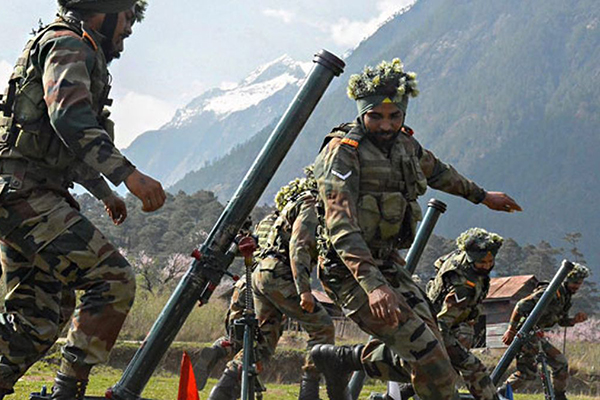The primary rationale for the launch the Agnipath scheme was the panic over the ballooning pension bill of the armed forces. The combined salary bill of the armed forces today is Rs 1.08 lakh crores. The pension bill now surpasses it at a whopping Rs 1.12 lakh crores. Quite clearly, this level of outlay for pensions was unsustainable and something would have to be done about it. There was a proposal to apply the National Pension Scheme (NPS) to the armed forces, too, but this was deemed politically unacceptable. There was a far more viable Inverse Induction Model – wherein soldiers retiring from the armed forces would automatically move on to the Central Police Organisations (CPOs) and paramilitary forces (PMFs) or do a short stint and then migrate to CPOs. This was the most logical option and one which the armed forces have been asking for decades. Unfortunately, the IPS lobby has been most unwilling to accept this for pure reasons of turf, empire building and institutional egos. The ostensible reason given is that they need young troopers. Considering that the age of retirement in the CPOs is 58, this sounds a bit rich. Data indicates that the CPOs, so far, took only 0.9% of retired soldiers in Group C posts and just 0.47% in Group D posts. Thus, the most logical and desirable model, which would have provided tactical skills and combat experience of the Army soldiers to the CPOs, was never allowed to take off.
The Agnipath Scheme now adopted is a mish-mash of many models. Unfortunately, in trying to please all it has ended up pleasing almost nobody. The ostensible aims are rather noble. It is to infuse discipline into the Indian population at large. So far, each year 60,000 armed forces personnel used to retire and go back to the villages. If they and the National Cadet Corps (NCC) could not instill general discipline, I fail to see how 43,000 Agniveers every year (present intake) will make a greater difference?
A great deal of concern is expressed about the second career of the Agniveers . Promises galore are being made but these would have to be fortified by an enactment of Parliament. My basic question is about the first chosen career. How viable or attractive is it? A youth in a village – would he opt for the Police, CRPF or BSF, etc, where once in, he can serve for 58 years or a most uncertain four year Tour of Duty in the Army? Four years is simply too short a period to integrate the Agniveers into the ethos and regimentation of an Army unit – especially for crew-served weapons. There is also the danger of trained manpower being exploited by terrorists, gangsters or anti-national elements. We had faced this threat in the Punjab in the 1980s. Shabeg Singh was a former Maj Gen of the Army. If he and other boys could go astray then how can we be so sanguine that the Maoist or other groups will not exploit the Agniveers. Also, we need to consider the burden on the commanding officers at the unit level. If he is operationally committed on the Line of Control/ counter-terrorist operations/ Line of Actual Control, how does he train these Agniveers? By the time he does, they would be on the way out. Will a short term inductee not be risk-averse? The Ukarine war has clearly highlighted the conscripts and short term inductees as the weakest link in the chain.
Cutting Manpower. The Agniveer scheme has been accompanied by a manpower cut of almost 1.5 lakhs in the Army. For two years no recruitment was done on the plea of Covid. Since 60,000 soldiers retire each year this implies that the Army is short by minimum 1.5–2 lakhs already. Given the alarming level of rising threats from China, Pakistan, Afghanistan, Turkey and terrorists elsewhere, this almost sounds like a civilisational death wish. The Agnipath scheme is long term in impact. Financial gains will only be realized 15 years down the line when they would ostensibly have retired. So, no new weapons will come into the armed forces now as result of this scheme. We still have to find resources to buy or produce the weapons. Meanwhile, the manpower has also been slashed.
Lessons from Ukraine. The Russia-Ukraine War has clearly highlighted the tremendous new lethality of the modern battlefield. The level of casualties to weapons, equipment and personnel have been unprecedented, that is reminiscent of the slaughters of the First World War. It is becoming a serious test of national stamina and endurance. Russia has no shortage of equipment. It is drastically short of manpower and its problems are acutely visible to the whole world. We have no dearth of manpower but are busy slashing and down-sizing when we need to desperately create new jobs for the rising youth-bulge in our population.
The Indian Army was a regular standing army precisely structured to fight such intense wars. Now that we are returning to the era of such wars, we are busy destabilizing ourselves by creating unprecedented amounts of organizational turbulence. Why do we want to down size by getting in short-term inductees as 50% of the force, reducing 17 single service commands to just five Tri-Service ones, as also change our regimental model? We have a tried and tested armed forces, which have served us very well so far. An old military proverb says you “don’t change horses mid-steam.”
What is the way out? IMR has two constructive suggestions – increase the colour service from four to seven years and retention from 25% to 50%. You will make the Army a viable career and return to the tried and tested model which kept the Army young and won you the 1971 War!













